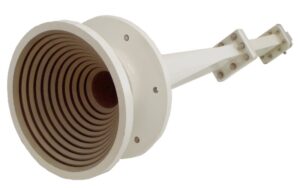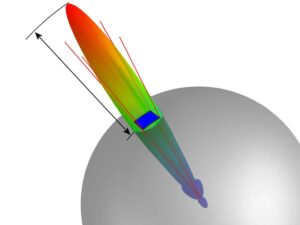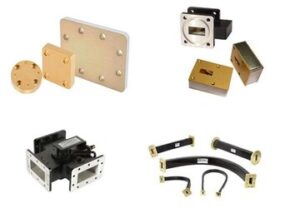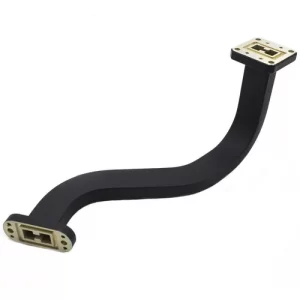Table of Contents
VSAT (Very Small Aperture Terminal) antenna
VSAT (Very Small Aperture Terminal) antennas range in diameter from 0.75 m to 2.4 m, 0.75 m antennas are suitable for individual users or small businesses with lower bandwidth requirements, while 2.4 m antennas are able to support higher data transfer rates, suitable for medium-sized enterprises or regional Internet service providers. A VSAT antenna with a diameter of 1.2 meters can provide download speeds of up to 30 Mbps and upload speeds of 5-10 Mbps in the Ku band. These data rates are sufficient to support high-bandwidth applications such as high-definition video streaming, telecommuting, and video conferencing.
In terms of power, VSAT systems typically use transmitters from 3 watts to 10 watts, and a transmitter with a power of 5 watts coupled with a 1.8 meter antenna can ensure data transmission distances of more than 500 kilometers, and can provide stable Internet connections when working in remote areas or at sea. The higher power 10-watt transmitter can support communication over longer distances and is suitable for the private network needs of large multinational companies or government agencies.
A 1.2-meter diameter VSAT antenna costs about $2,000 to $5,000, typically $500 to $1,000 to install, and takes about two to three days to install, making it far more economical and efficient than traditional large Earth station antennas, which take weeks to install. And the maintenance cost is relatively low, the annual maintenance cost is generally less than 500 US dollars, especially suitable for small and medium-sized enterprises with limited budgets.
In remote areas of Africa, Southeast Asia and South America, VSAT antennas have become the primary way for local schools, medical facilities and government offices to access the Internet. According to the satellite operator, a 2.4-meter VSAT antenna can provide up to 50 Mbps bandwidth in remote areas on the C-band, supporting hundreds of simultaneous device connections.
The service life of VSAT antennas is between 15 and 20 years, and in regions with more stable weather conditions such as North America and Europe, the average life of VSAT antennas can reach 20 years. In harsh climates, such as deserts or extremely cold regions, the lifetime of the antenna may be reduced to 10 to 15 years. Although the antenna body has a long life, accessories such as the transmitter and receiver need to be replaced within five to seven years, which brings some additional maintenance costs.
VSAT antennas are often used on aircraft and ships to ensure stable communications over long or long distances. According to maritime industry reports, a 1.5-meter VSAT antenna can cover a radius of about 1,000 kilometers, enabling ships to maintain real-time communication links with land over thousands of kilometers.
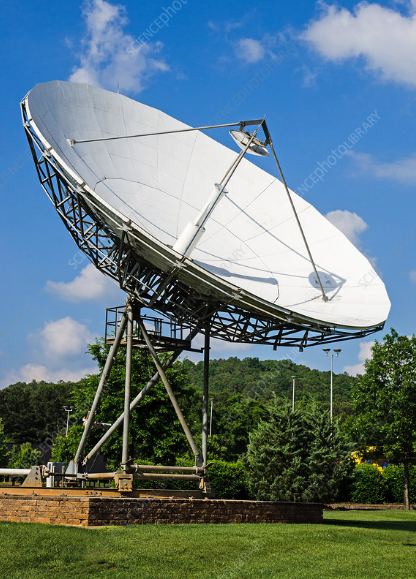
Medium earth station antenna
Medium Earth Station antennas range in size from 3 meters to 10 meters, and a medium Earth station antenna with a diameter of 5 meters can provide download speeds of up to 150 Mbps and upload speeds of 50 Mbps in the C-band, which is suitable for businesses or organizations requiring high-speed data transmission. Many telecommunications companies around the world use such antennas for satellite link connections to provide Internet service to remote areas. Compared with VSAT, the medium Earth station antenna is larger in size, but its high bandwidth and stability make it a clear advantage in the large enterprise network and satellite communications industry.
Medium Earth station antennas are equipped with transmitters ranging from 20 watts to 100 watts, and a 6-meter antenna with a 50 watt transmitter can support communication distances of up to 500 kilometers in the Ku-band. The lower power 20-watt transmitter is suitable for short – and medium-range communication, mainly for urban fringe areas or regional communication centers.
In terms of cost, an antenna with a diameter of 6 meters, equipped with the corresponding transmitter and receiver, the overall cost is between $100,000 and $200,000, while the installation cost is between $5,000 and $10,000, and the installation time is about 1 to 2 weeks.
Mainstream television stations in many countries use Earth station antennas with a diameter of 7 meters for satellite uplink, ensuring that television signals can be transmitted to viewers around the world. According to the International Telecommunication Union (ITU), a 7-meter antenna can achieve a transmission efficiency of more than 95% in the C-band, which means that under ideal conditions, it can transmit more than 2,000 megabits of data per second, enough to support the transmission of 4K high-definition TV signals.
A good quality Earth station antenna can last 25 to 30 years if properly maintained. Even in some harsh climates, the service life of the antenna can be maintained at about 15 to 20 years. Regular maintenance and calibration ensure that the antenna maintains its transmission efficiency and accuracy over the long term. Although the antenna body does not need to be replaced frequently, the transmitter and receiver need to be updated every five to 10 years, which can cost between $20,000 and $50,000.
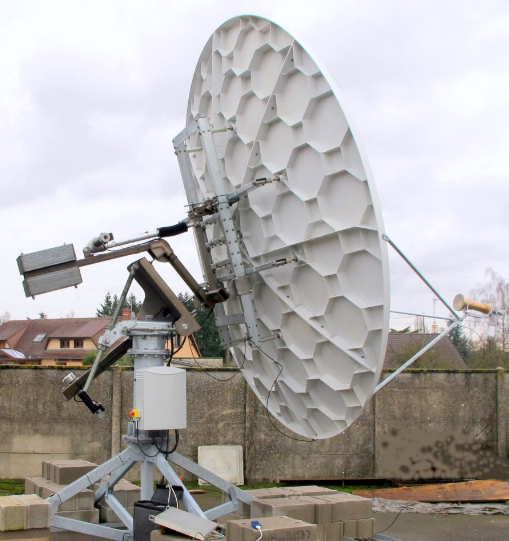
Large Earth station antenna
Large Earth station antennas are more than 10 to 30 meters in diameter and are mainly used in scenarios requiring high precision and large bandwidth such as deep space exploration, satellite tracking and global communications. NASA has deployed Earth station antennas with diameters of 34 meters and 70 meters at three major sites around the world to receive data signals from Mars rovers and other deep space missions. The 34-meter diameter antenna can provide download rates of up to 1 Gbps in the X-band and maintain a stable communication connection even under extreme conditions, ensuring that the probe can still successfully transmit data back to Earth from hundreds of millions of kilometers away.
Large Earth station antennas need to carry a high-power transmitter between 100 watts and 1 kilowatt, and antennas with a diameter of 15 meters use a 250-watt transmitter, which can ensure that it can achieve a communication distance of 1,000 km to 3,000 km in the C-band and Ku-band. NASA’s 70-meter deep space antenna uses more than 10 kilowatts of power to ensure stable communication with the Mars rover, capable of transmitting critical images and science data.
Earth-station antennas 10 to 15 meters in diameter cost between $500,000 and $1 million to build, while 34-meter or even 70-meter antennas like those used by NASA for deep space communications can cost millions of dollars or more to build. The installation time of this type of antenna is also longer, usually at least 3 months to complete the foundation construction, antenna installation and commissioning. Annual maintenance costs typically range from tens of thousands to hundreds of thousands of dollars, especially if high-power transmitters need to be calibrated and replaced regularly.
Many commercial satellite operators rely on antennas with diameters of 12 to 15 meters for satellite uplink and downlink management. Under normal operating conditions, a 12-meter antenna can support 24 hours of uninterrupted satellite signal tracking, its transmission efficiency can reach more than 90% in the Ku band, and can handle hundreds of megabits of data traffic. Large television stations use 14-meter antennas to transmit 4K and 8K ultra HD signals, enabling global audiences to receive high-quality TV programs simultaneously.
Well-maintained antennas can last for more than 30 years, and some U.S. military satellite communication stations still use Earth station antennas built in the 1980s, which have been upgraded several times and are still able to support modern satellite communications needs. Under typical conditions, a 10 – to 20-meter antenna has an average life span of 25 to 30 years, while a 70-meter deep-space antenna like NASA’s is expected to last more than 40 years. Although the antenna body has a long life, accessories such as the transmitter and receiver need to be replaced every five to 10 years, and the cost of upgrading this part usually ranges from $100,000 to $500,000.
In recent years, the military communication system of many countries has begun to use mobile Earth station antennas above 15 meters for real-time communication between the battlefield or remote military bases, and the United States military has deployed several 15-meter mobile Earth station antennas in the Middle East to ensure that it can still maintain communication connections with the headquarters in harsh environments.

